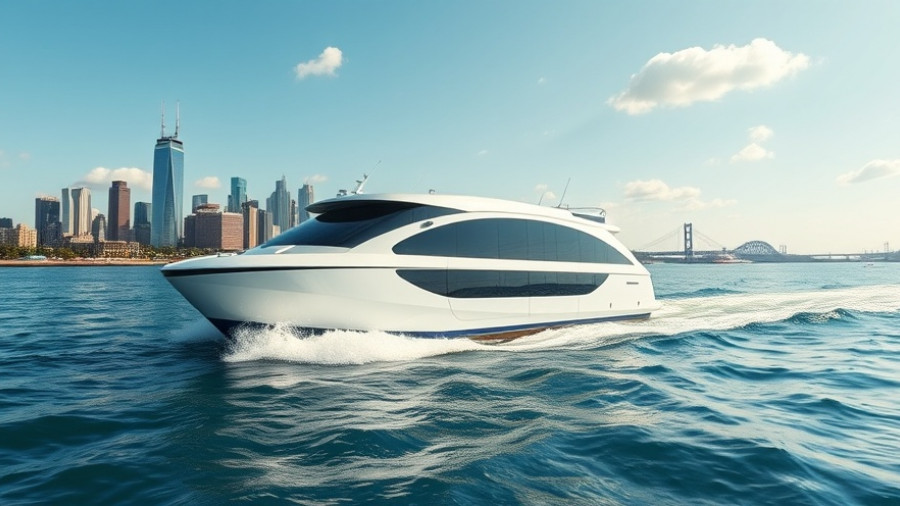
The Ambitious Polar Max Project: A New Era for Canadian Shipbuilding
In an exciting development for the shipbuilding sector, Groupe ALMACO has recently secured a CAD 105 million Engineering, Procurement, and Construction (EPC) contract with Chantier Davie Canada Inc. This project revolves around the construction of the Polar Max heavy icebreaker, which is currently being built over two continents—its hull in Finland and its superstructure in Charlottetown, Quebec, sending ripples of anticipation throughout the Canadian maritime industry.
A Dual-Build Strategy: Optimizing Time and Talent
The dual-build strategy employed in this project allows crucial phases of the icebreaker's construction to proceed simultaneously, expediting the overall timeline. By utilizing resources effectively on both sides of the Atlantic, ALMACO and Davie can ensure that the Polar Max is completed on time and to the highest specifications. This approach leverages existing expertise and significantly enhances project efficiency, reminiscent of the successful conversion of the Asterix vessel, which highlights the potential for synergy in cross-border collaborations.
Job Creation and Skills Development: Bridging Global Talent with Local Expertise
In a bid to localize the skills required for this project, ALMACO is expanding its operations within Quebec. The establishment of a “cabin factory” in Quebec City will enable the company to manufacture pre-fabricated modular cabins. This not only aids logistical efficiency but also opens the door to numerous job opportunities, as a combined recruitment initiative seeks to blend the expertise of European workers with Canadian talents. Such local initiatives are key to fostering long-term growth in a province that is already recognized for its high-degree shipbuilding expertise.
Investing in the Future: Economic Impacts Beyond the Project
The economic ramifications of the Polar Max project extend beyond immediate job creation. As Quebec positions itself as a shipbuilding hub, the wider Canadian marine sector stands to benefit through collaborations with local subcontractors. This investment is expected to stimulate regional economies and drive innovation within the industry, embodying a forward-thinking approach that prioritizes local capacity building while meeting international demands.
Looking Ahead: The Future of Icebreaker Technology
The Polar Max icebreaker represents a significant advancement in maritime technology. Not only will it bolster Canada's capabilities in Arctic operations, but it will also establish new standards of excellence within the shipbuilding industry. As climate change opens new maritime routes in the Arctic, projects like Polar Max play a crucial role in ensuring that ships are equipped to navigate these developing waters safely and effectively.
The Partnership Between ALMACO and Davie: A Model for Future Projects
The collaboration between ALMACO and Davie is not just a partnership but a commitment to excellence in shipbuilding. Vilhelm Roberts, executive chairman of the board at ALMACO, emphasized the importance of shared ambitions within the maritime industry, reinforcing the idea that harboring local expertise is essential for delivering world-class vessels while actively contributing to the economy.
As we look forward to the completion of Polar Max by 2030, it serves as a powerful reminder of what can be achieved through international collaboration, combining the finest talents from multiple nations to tackle some of the most ambitious maritime challenges of our time. This venture stands not only as a promise of engineering prowess but also as a pathway toward unprecedented maritime opportunities.
Join the Journey: Stay Informed on Maritime Innovations
The Polar Max project symbolizes a pivotal moment in the evolution of Canadian shipbuilding. As this partnership unfolds, we invite you to stay tuned for updates on maritime innovations and the exciting developments in the industry. Whether you’re a future shipyard employee, a maritime enthusiast, or someone simply invested in the economic growth of Canada, keeping abreast of news like this opens many doors for understanding how our world is changing. Let's embrace this journey together towards sustainable and groundbreaking maritime achievements.
 Add Row
Add Row  Add
Add 




Write A Comment